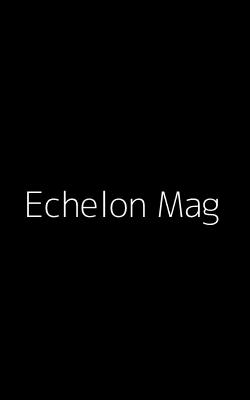Amidst the complexities of an ever-evolving insurance landscape, Sri Lanka Insurance (SLIC) the country’s biggest insurance company—has demonstrated resilience, determination, and unwavering commitment to its customers and community. In this interview, Chandana L. Aluthgama, Group Chief Executive of Sri Lanka Insurance, shares insights into the leadership strategies, organizational initiatives, and forward-thinking approach that has contributed to SLIC’s remarkable successes.
What leadership strategies and organizational initiatives contributed to SLIC’s remarkable achievements in 2023?
In 2023, despite facing various challenges, SLIC experienced notable achievements driven by strategic leadership and organizational initiatives. The insurance industry’s unique dynamics, where actions in one year significantly impact outcomes in the following year, underscored the importance of our resilience and determination.
Our 2023 financial results reflected a profit before tax of Rs10.6 billion, continuing our consistent growth trajectory since 2017 and 2018. Notably, our combined Gross Written Premium (GWP) reached Rs44.2 billion, demonstrating a growth rate of 7.2%.
Our life and general insurance sectors achieved significant progress with GWPs of Rs21 billion and Rs23.1 billion, respectively. Our Asset Base expanded to Rs313.3 billion, with a remarkable Life Fund of Rs180 billion.
Beyond financial metrics, our commitment to customers remained steadfast. We disbursed approximately Rs27.6 billion in claims, benefits, and maturities, averaging Rs2.3 billion monthly. Despite economic challenges, we declared a bonus of Rs10.4 billion to policyholders.
These achievements underscore our resilience and dedication to core values. Continuously recognized for various awards, including six consecutive years as the Most Loved Insurance Brand, we remain committed to excellence and inclusivity.
Emphasizing continuous improvement, we obtained new ISO certifications and implemented employee recognition schemes. These initiatives and our ability to navigate the segregation of our life and general insurance businesses demonstrate our ability to adapt forward-looking strategies to foster a performance-driven culture that drives growth.
How has segregating your business into life and general insurance impacted your strategic direction?
Segregation has unlocked opportunities for us by allowing a more precise focus on our core businesses. Mandated by the Insurance Regulatory Commission Act No. 3 of 2011, we have separated our composite insurance company, enabling dedicated attention to each segment.
This separation has streamlined resource allocation, catering to the distinct characteristics of each segment. General insurance operates on shorter-term commitments, while life insurance entails long-term engagements spanning decades. This dichotomy demands tailored approaches to operations and accounting practices.
With segregated teams for actuarial and financial functions, each unit can pursue its objectives without compromise. This focused approach has already yielded positive results, particularly in the life insurance segment, where targeted strategies are proving effective.
Distinct corporate plans have been developed for each division, ensuring alignment with our fundamental objectives and enhancing our responsiveness to market needs in a dynamic landscape characterized by shifting consumer preferences and technological advancements.
By dedicating resources independently to each product line, we can effectively satisfy shifting market demands and invest in innovation to capitalize on emerging opportunities for growth.
How do you perceive technology’s role in shaping the insurance industry’s future in Sri Lanka?
Technology is poised to redefine the insurance industry in Sri Lanka, particularly, through advancements in distribution channels. Historically, the agency network dominated these channels, comprising agents and sales executives operating under separate agreements. However, there’s a pressing need to ensure intermediaries can understand evolving client needs. Initiatives like Continuous Professional Development (CPD) are pivotal in fostering a culture of continuous learning.
Technology holds the key to enhancing intermediary capabilities and bridging knowledge gaps. Digital platforms empower intermediaries to deliver superior service to clients, albeit with challenges like consumer apprehension and the need for personalized service.
Climate change presents another significant challenge, particularly for general insurance and evolving healthcare trends, including preventive measures, are reshaping insurance demands. The industry must adapt to meet these changing healthcare needs, especially concerning coverage for senior citizens and affordability. Striking a balance between business objectives and social responsibility is crucial in addressing these challenges. Technology has a vital role in all these.
How has your leadership style and approach contributed to shaping SLIC’s corporate culture and achieving its objectives?
In terms of leadership, I’ve adopted a transparent approach, prioritizing open communication with all stakeholders to build trust and ensure alignment with SLIC’s values and objectives.
Recognizing the need for a unified organizational culture, we introduced core values to promote a performance-driven environment: mutual trust, respect, teamwork, personal commitment, ethics, integrity, and excellence. This initiative aimed to create cohesion across departments and levels within the company.
Cultural transformation was a gradual process, marked by themed focuses such as “working together” in 2018, emphasizing collaboration. Concurrently, we implemented Key Performance Indicators (KPIs) to align individual and departmental goals with company objectives, fostering accountability at all levels.
A significant shift in leadership dynamics occurred with the adaptation of a Level 5 leadership approach, empowering teams to make informed decisions autonomously. This decentralization fostered ownership and accountability among team members.
Restructuring efforts, particularly amid the COVID-19 pandemic, led to a unified leadership structure for branches, mitigating internal competition and fostering collaboration. Transparent communication and stakeholder engagement were pivotal in navigating this transition.
During the pandemic, we devised innovative solutions to streamline processes, such as relocating operations for branch leadership selection while upholding safety measures. This proactive approach reflects our commitment to fostering a conducive work environment for growth, innovation, collaboration, excellence and resilience, enabling our teams to thrive in a dynamic environment.

